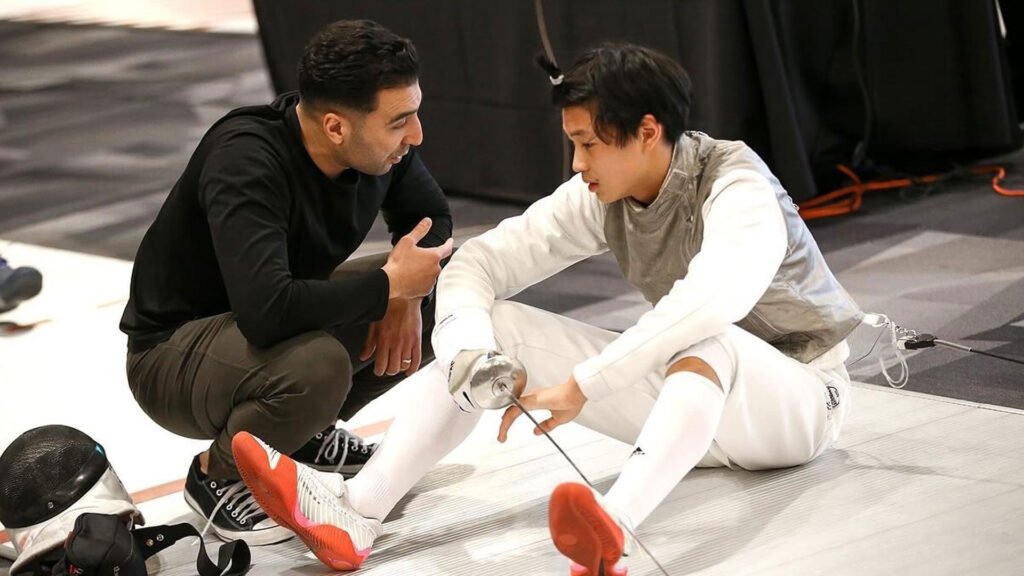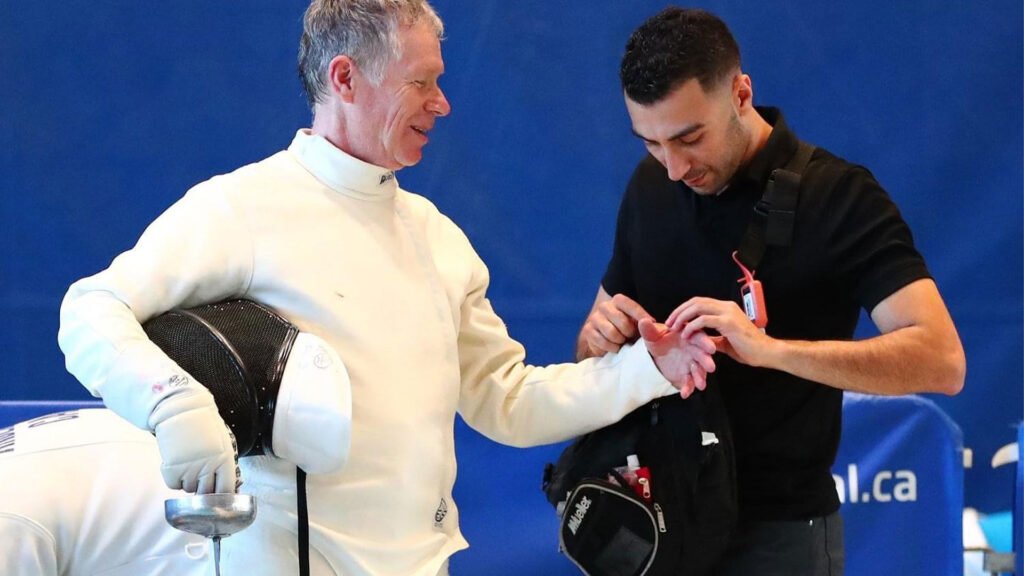Canadian chiropractor leads the way for medical team in Canadian fencing
Dr. Nader Abdelkader shares his unique journey from being a competitive fencer to becoming a leading figure in chiropractic care for athletes, particularly in the sport of fencing.


Dr. Nader Abdelkader, DC was destined to be one of the greats in fencing.
His interest in fencing began early in life, sparked by his father, a national champion in Egypt in 1965 and Hall of Fame inductee. Instead of pushing him solely towards fencing, Dr. Abdelkader’s father encouraged him to try various sports, fostering a passion for athleticism during his adolescence.
“But I tried fencing and it stuck with me from a very young age,” shared Dr. Abdelkader.
Dr. Abdelkader’s journey in fencing led to competitive success throughout his adolescence and into his undergraduate years. While he eventually decided he needed to “retire” and focus more on his studies, fencing remained a passion.
“Fencing was my main motivation to get into chiropractic and I actually said that in my interview to get into the DC program and the sport fellowship program after as well.”
Dr. Abdelkader
As he was transitioning away from competitive fencing, he realized the need for musculoskeletal (MSK) experts in the fencing community. The knowledge gap for MSK care drove him into chiropractic. “When I or my teammates would get injured, no one would treat us. No one would even know how to treat us, let alone know what fencing is or what fencing biomechanics entailed.”
When injuries occurred, the lack of understanding about fencing-specific biomechanics often left him and other athletes without adequate treatment. At most, he recalls at national competitions, “there would be a paramedic, which is great for emergency level events. But they wouldn’t be able to assess a fencer if they blew out their knee, for example.”
Currently, in addition to his clinical chiropractic practice, he serves as the lead medical officer for Fencing Canada’s national team and chairs both the Sports Medicine Committee of Fencing Canada and the Medical and Health Committee for the Ontario Fencing Association. It was Dr. Abdelkader who founded these committees – before then, he mentions medical standards and safety protocols were overlooked.
What is fencing?
- Fencing is a non-contact martial art that involves using (dull) weapons to hit and score against your opponent.
- It is an individualistic sport but there are team events where you accumulate points together through individual matches. Fencing is practiced worldwide and is an Olympic sport.
- There are also different kinds of weapons (swords) that are used in fencing: the epee, foil, and saber.
- Each weapon has different targets when being used. The foil is what people used in duel situations, a saber is used more for slashing, and the epee allows for the entire body to be the target.
- The weapons are really dull in fencing and fencers wear uniform constructed with Kevlar so it can withstand a lot of force. While the weapons don’t penetrate the suit, it can still hurt because of the stabbing and slashing motions.
- You fence with one hand (you either remain right- or left-handed, you do not switch) during a match.
“Most of the injuries we see in fencing are atraumatic injuries – overuse type of injuries. Unlike football or hockey, for example, where there is a traumatic event where a player is involved in a collision – the cause and mechanism are quite clear most of the time. It also usually makes the treatment plan quite clear,” explains Dr. Abdelkader. “For fencers, they’re mostly overuse injuries, so when we ask what happened, they say, ‘I don’t know, I was just fencing.’ I have to investigate, and it makes it a bit tougher from a chiropractic perspective because you must understand the etiology, the cause of someone’s pain or injury, because it’s not as clear as if they fell or something like that.”
Additionally, he highlighted the scarcity of scientific literature on fencing compared to more mainstream sports, which further complicates the process of developing tailored treatment strategies. Unlike symmetrical athletes such as runners or swimmers, fencers possess unique asymmetrical characteristics due to the nature of their sport. This imbalance presents a challenge for diagnosis and treatment, as traditional approaches may not accurately address fencing-specific issues.
Dr. Abdelkader has also observed that a parallel between fencers and the typical office worker he has treated is overuse. “Fencers have overuse injuries from doing something asymmetrical all the time and not to the best of the biomechanics, whereas the average population is repetitively overusing their muscles from poor posture slouching over a keyboard. However, they’re different in that one population is overuse of working and the other is overuse of not working. I’m trying to correct fencers and calm them down, while with office workers, I’m trying to get them moving differently.”


So, as Dr. Abdelkader explains, similarly to visiting a family physician or dentist, as a primary healthcare provider, a chiropractor will do an initial assessment, regardless of if you are in pain. The assessment helps identify underlying issues, identifies risk factors and potential dysfunctions, and informs a tailored treatment plan. This proactive approach promotes long-term musculoskeletal health and overall well-being.
“My general advice is to get an assessment – pain or no pain – and see what kind of dysfunction and diagnoses are associated with that assessment and go for an appropriate treatment plan based on that diagnosis. Don’t wait!”